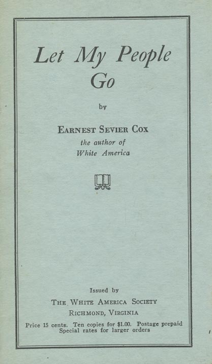
Connor Dolson
Archives and Classrooms: A Creative Enterprise
I designed "Archival Civil Rights: A High School History Unit Plan" as a guide for teachers hoping to use The Fight For Knowledge, bringing together classrooms, archives, and museums to enrich learning. Through sample unit plans, engaged archives can help K–12 teachers find efficient new ways of using materials. This unit plan enhances historical learning while stressing the relationship between classrooms and the wider community http://www.thefightforknowledge.org/additional-resources.
Unit Plan Description
Students engage with material about the civil rights era through a process of revisionary journal writing, culminating with a project focused on history in their community. In revisionary journal writing, students voice the story of the civil rights era as they understand it, compare their narratives with those of their peers, gather new materials to enrich and challenge their ideas, and rewrite their narratives. In conventional revisionary work, writers refine their ideas to make them convincing, coherent, and concise. In revisionary journal writing, the story becomes ever more complex, nuanced, and complicated.
What if, for example, a teacher introduced the artifact in Figure 1 taken from The Fight for Knowledge?
The pamphlet, whose cover is pictured here, was written by a prominent white supremacist who billed himself as a scientist, eugenicist, and advocate for the white race (Dictionary of Virginia Biography 2013). Students might be surprised to learn that some of Virginia's most restrictive race laws were passed in the 1920s (Plecker 1924). Without learning more about white supremacy in the 1920s, students may have a harder time understanding the legal support for institutionalized racism—and the obstacles that the civil rights movement faced in obtaining social equity. Notice that the research presented in this section was obtained with just free online resources. The revisionary journal writing is essential to this process because as students look back over their previous entries, they may reflect on the skills they employed.

Digital archives, such as The Fight for Knowledge, enable this process by providing students with primary materials from the past of their communities that would have been otherwise out of their reach. This unit plan encourages a creative relationship between teachers and museums to help students understand archives, both traditional and digital—and how they enable us to make sense of history. Early on, students travel to a local museum to study examples of exhibit design and how museums increase a community's engagement with the past. Later, students propose a topic, conduct research, create a narrative, and design an exhibit. Then, students work in groups to critique one another's narratives and designs in a workshop setting. The project ends with a gallery day. Archivists, museum professionals, and other community members are invited to the school to see the exhibit designs while students stand by to answer questions and engage in dialogue.
"Archival Civil Rights: A High School History Unit Plan" models how the digital environment might democratize the construction of historical memory and expand dialogue about the past. In many classrooms students are given history, but never expected to do it. This history unit plan assumes that students can "do" history—in fact, that doing is the only path to meaningful understanding.
Works Cited
ABC-CLIO and The Colonial Williamsburg Foundation. 2013. "Slavery and the Law in Virginia."Accessed March 25. http://www.history.org/history/teaching/slavelaw.cfm.
Dictionary of Virginia Biography. 2013. "Earnest Sevier Cox (1880–1966)." In Encyclopedia Virginia, edited by Brendan Wolfe. Virginia Foundation for the Humanities. http://www.EncyclopediaVirginia.org/Cox_Earnest_Sevier_1880-1966.
Plecker, W. A. 1924. "The New Virginia Law to Preserve Racial Integrity." The Virginia Health Bulletin 16 (1924): 3–4. http://www.eugenicsarchive.org/html/eugenics/index2.html?tag=436.
Atherton, J. S. 2011. "Learning and Teaching; Assimilation and Accommodation." http://www.learningandteaching.info/learning/assimacc.htm.
Barnes, Douglas. 2008. "Exploratory Talk for Learning." In Exploring Talk in School, edited by Neil Mercer and Steve Hodgkinson. London: Sage.
Dewey, John. 1910. How We Think. Lexington, MA: D. C. Heath. http://archive.org/details/howwethink000838mbp.
Gee, James Paul. 2008. "A Sociocultural Perspective on Opportunities to Learn." James Paul Gee (blog). http://www.jamespaulgee.com/node/31.
Hicks, Troy. 2009. The Digital Writing Workshop. Portsmouth, NH: Heinemann.
Popham, W. James. 2003. Test Better, Teach Better: The Instructional Role of Assessment. Alexandria, VA: Association for Supervision and Curriculum Development.
Ray, Katie Wood. 2001. The Writing Workshop: Working through the Hard Parts (And They're All Hard Parts). With Lester Laminack. Urbana, IL: National Council of Teachers of English.
Tosh, John, ed. 2000. Historians on History. London: Longman.
Wiggins, Grant P., and Jay McTighe. 2001. Understanding by Design. 2nd ed. St. Louis, MO: Association for Supervision and Curriculum Development.
Wineburg, Samuel S. 2001. Historical Thinking and Other Unnatural Acts: Charting the Future of Teaching the Past. Philadelphia: Temple University Press.



